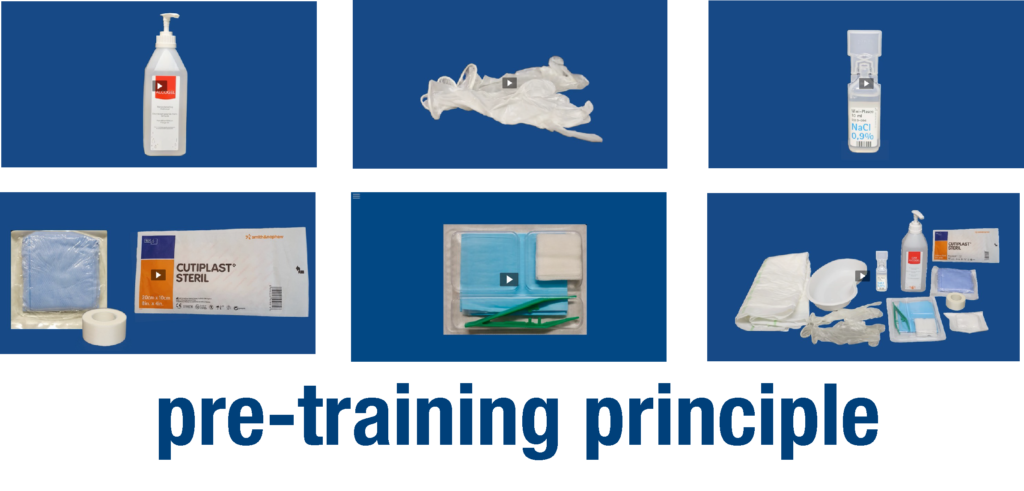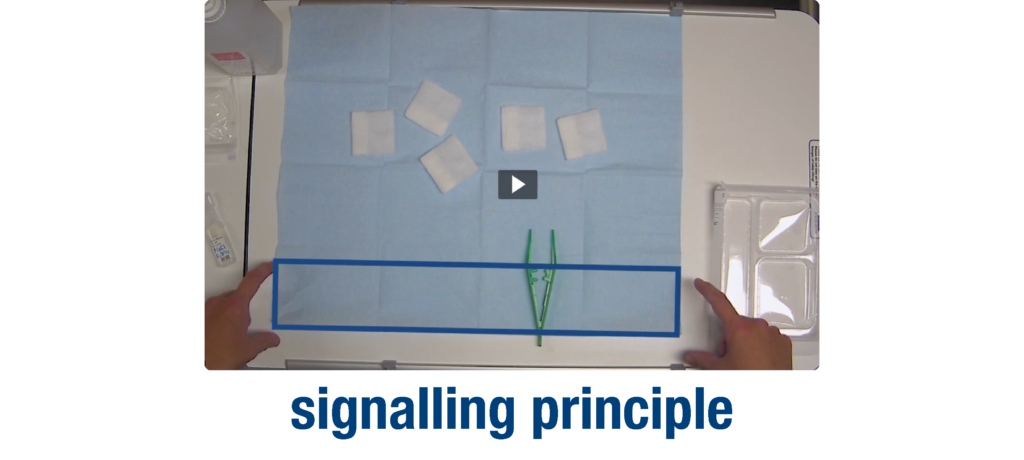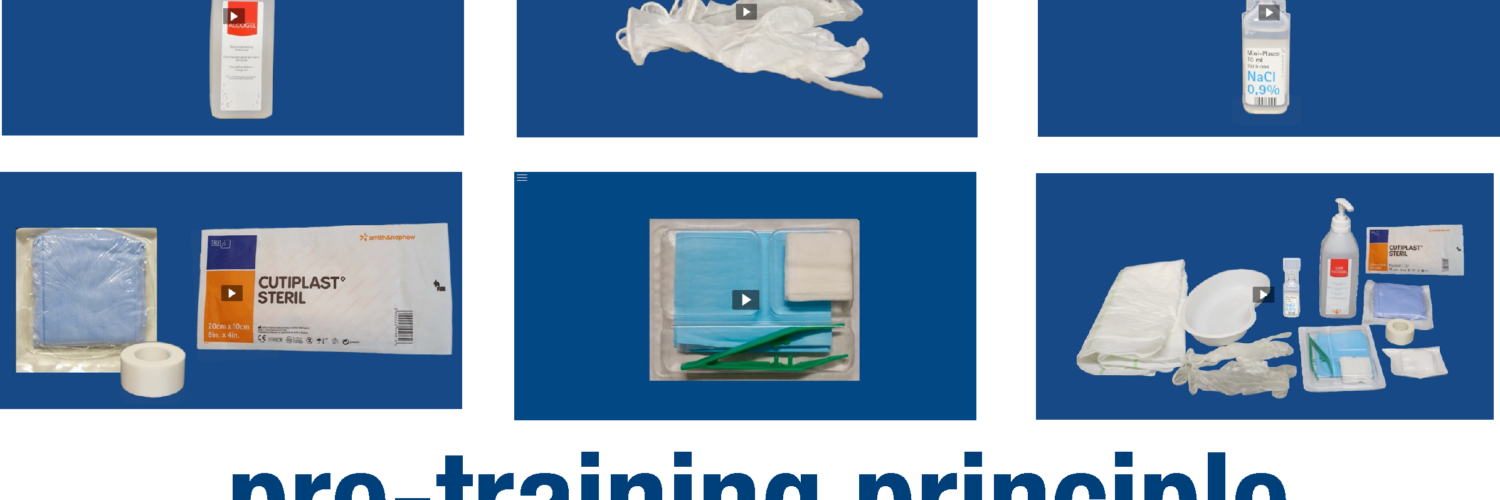by Greet Leysens, KU Leuven, Belgium.
Health professional education
In health professional education (HPE), the instruction of psychomotor nursing skills (PNS), such as venipuncture or wound care, covers a substantial part of the curriculum. PNS are movement oriented and vary in complexity. The main objective during the initial learning phase is to achieve accurate performance of these skills. As students progress from novice to expert, they initially need context-free rules to guide their task performance, due to their lack of clinical experience. A clear and visible demonstration, along with breaking the skill into manageable steps, enhances the learning process. Hence, teaching new PNS requires an effective instructional approach, posing an ongoing challenge in HPE. Currently, synchronous real-life as well as asynchronous video demonstrations, are common practices. Both approaches offer distinct advantages, prompting the question if a student would master a new PNS more effectively after observing a real-life compared to a video demonstration. We delved into the learning context of HPE and are exploring how video can be an effective tool for teaching new PNS to novice nursing and midwifery students. But how can we design the ideal demonstration video concretely, to maximise learning effectivity?
Multimedia principles
While video as a multimedia tool is not new, its usability has increased due to the ease of producing, sharing, and viewing video-based content. Mayer’s Cognitive theory of Multimedia Learning highlights the benefits of multimedia, emphasising the effectiveness of combining words and pictures for deeper learning. This framework outlines various multimedia principles that aim to minimise cognitive overload, and apply to all forms of multimedia. Recent evidence identifies 31 multimedia principles specifically tailored for the design of instructional videos. The term ‘instructional video’ encompasses a variety of formats, including lectures, live content, documentaries, and explainer videos such as demonstrations. Demonstration videos, in which an instructor shows how to perform a task, are particularly effective for showcasing PNS.
During the creation of our PNS demonstration videos, several practical questions emerged: How should these principles be applied when showcasing a PNS? Are all the instructional video principles equally relevant to demonstration videos? If so, how can we incorporate principles such as ‘dialogue’, ‘guided discovery,’ ’emotional design,’ and ‘interactivity’ into a PNS demonstration video? The literature on the application of multimedia principles in the context of HPE is scarce. Additionally, comprehensive descriptions of the media used in educational research are lacking, leading to possible individual interpretations when applying these principles.
Checklist
To ensure the correct application of the multimedia principles, we decided to develop a checklist, based on the 31 multimedia principles. To ensure content validity, we sought feedback from eight experts at KU Leuven, Belgium. This feedback led to the omission or refinement of certain propositions. As a result, our checklist now comprises 24 principles, that are relevant to the creation of PNS demonstration videos. Table 1 shows some examples of the propositions included in the checklist*:

Table 1: Examples of multimedia principles and propositions in the checklist
* For access to the complete checklist, please contact the corresponding author.
Videos
To determine whether students could master new PNS more effectively by observing a real-life compared to a video demonstration, we crafted videos showcasing the skills of hand disinfection, venipuncture, intramuscular injection and wound care, keeping in mind the 24 principles. To prevent individual interpretation of the principles, we presented each video to experts from KU Leuven and fellow nursing and midwifery teachers. They were asked to review and score the application of each principle as ‘yes’, ‘not always’, or ‘no’ and had the possibility to add concrete suggestions. This feedback was used to further refine the videos. Figure 1 and Figure 2 illustrate the application of certain principles:

Figure 1: Video screenshot depicting the multimedia principle ‘pre-training’

Figure 2: Video screenshot depicting the multimedia principle ‘signalling’
Lessons learned
Navigating through multimedia principles to design effective PNS demonstration videos has been an enlightening journey. We acknowledge that not all multimedia principles as commonly accepted in the literature are relevant or applicable to PNS demonstration videos. Based on careful evaluation and refinement of those multimedia principles, we derived a practically useful checklist that could serve as an assessment instrument of the instructional quality of PNS demonstration videos. In general, the checklist could also be a valuable tool for teachers who wish to design other PNS videos to maximise learning. Indeed, our research has reinforced our belief that, when used effectively, demonstration videos can be a powerful tool in HPE, as long as they are produced taking into consideration the right set of multimedia principles. Our developed checklist could be an interesting resource for teachers and practitioners who want to go that route.
More information

Author
Greet Leysens, doctoral researcher KU Leuven, Educational Master in Health Sciences, Leuven, Belgium
Prof. dr. Nathalie Charlier, promotor, KU Leuven program director Educational Master in Health Sciences, Department of Pharmaceutical and Pharmacological Sciences, Leuven, Belgium
Prof. dr. Wim Van Petegem, copromotor, KU Leuven, Faculty of Engineering Technology, Campus Groep T, Engineering Technology Education Research (ETHER), Leuven, Belgium














